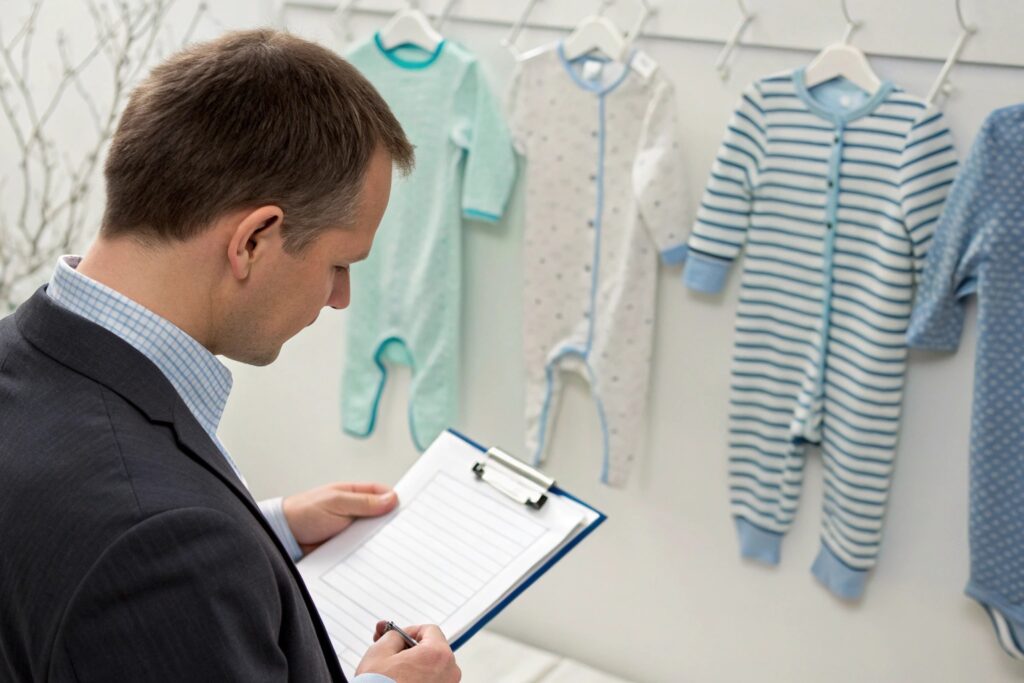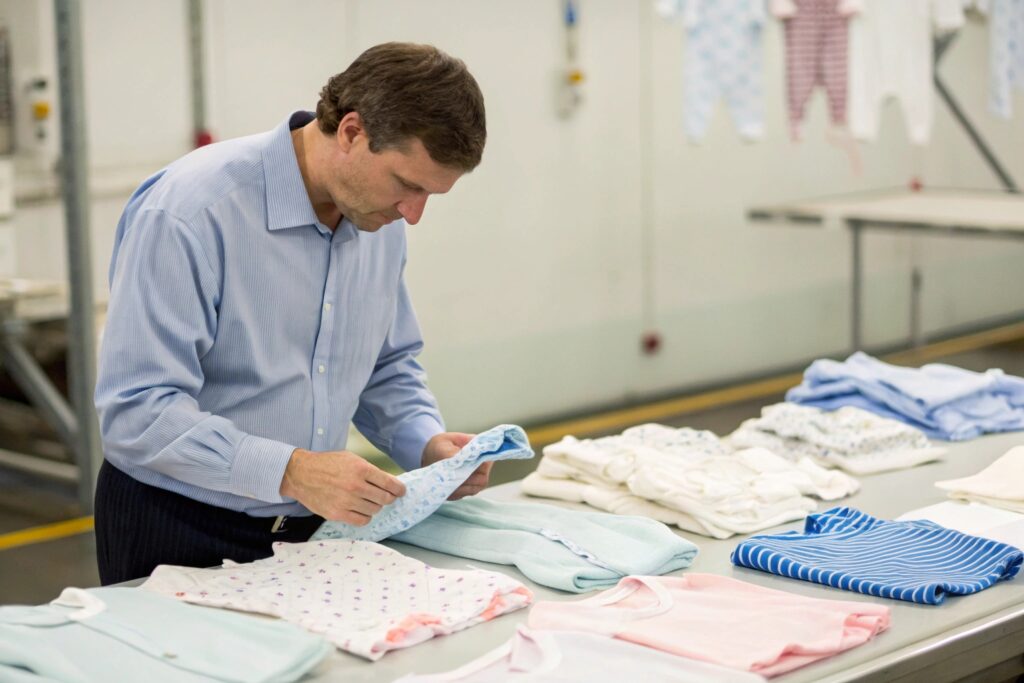For brands and parents alike, nothing matters more than safety—especially when it comes to newborn and infant garments. At [Your Brand], we take safety compliance seriously, ensuring that every item we produce meets or exceeds international babywear safety standards.
We follow strict global guidelines, run thorough material tests, and maintain full documentation across every step of the production process—so our clients can trust that each babywear order is compliant, certified, and safe.
Here’s how we protect your brand—and the little ones you serve.
What Global Safety Standards Apply to Babywear Production?
Different countries and regions have specific safety requirements for babywear, especially for infants under 36 months. We comply with all major international standards to ensure global market readiness.
Our garments are produced in alignment with CPSIA (USA), EN 14682 and EN 71 (EU), and other textile safety laws related to flammability, choking hazards, chemical exposure, and labeling.

Key safety regulations we follow:
| Region | Applicable Standards |
|---|---|
| USA | CPSIA, ASTM F1816 (drawstrings), Flammability CFR 1610 |
| EU | EN 14682 (cords and toggles), EN 71 (toy safety for accessories) |
| UK | UKCA marking, General Product Safety Regulation |
| Global | OEKO-TEX® Standard 100, GOTS for organic lines |
Our team constantly monitors updates in legal compliance frameworks to ensure every order is legally safe and market-ready.
How We Test Fabrics, Trims, and Fasteners for Infant Use?
Infant garments require special attention to detail. Every button, seam, and snap must pass safety thresholds for toxicity, durability, and choking prevention.
Before bulk production, we subject every fabric, fastener, and label to physical and chemical testing—ensuring it’s baby-safe and production-approved.

Safety testing we conduct:
| Component | What We Test For |
|---|---|
| Fabrics | AZO dye testing, pH level, formaldehyde-free |
| Prints/Labels | Lead content, colorfastness, flammability |
| Snaps/Zippers | Pull strength, nickel-free metal, choking risk |
| Elastic/Cords | Length compliance (no long drawstrings) |
| Stuffed items | Fiber migration (EN 71-1) |
Our labs and third-party partners provide pass/fail reports with full traceability—backed by batch-level testing logs.
Why Documentation and Certifications Matter for Compliance?
Buyers, distributors, and retailers increasingly demand proof of safety—not just promises. That’s why we maintain clear records and offer certifications aligned with each order’s destination.
Every certified order is accompanied by compliance reports, lab results, factory declarations, and traceable certification numbers.

Documentation we provide:
| Document Type | Purpose |
|---|---|
| CPSIA General Conformity Certificate (GCC) | For US imports—proves testing by CPSC-accredited lab |
| EN 14682 declaration | For Europe—confirms no drawstring hazards |
| OEKO-TEX® / GOTS license | For organic or sustainable collections |
| Test reports | From SGS, Intertek, or client-appointed labs |
| Technical file | Includes fabric specs, BOM, care label info |
All documentation is stored and available digitally and by batch, ensuring full traceability from fabric roll to final packed garment.
Our Quality Control Process from Sampling to Final Delivery?
Safety starts at the design table—but it’s verified in every stitch. Our quality control team follows a multi-step safety and workmanship process from day one.
Each order passes through layered inspections—from pre-production sampling to final AQL-level checking—ensuring the product you receive is consistent, safe, and compliant.

Our QC steps:
- Tech Pack Review: Safety specs confirmed during sample planning
- Sample Approval: Fit, trims, and labels verified against compliance guidelines
- Lab Testing: Material and component testing based on region
- Inline Inspection: Sewing, placement, and fastener strength monitoring
- Final Inspection: AQL-level QC with full checklist + packaging verification
- Compliance Pack Handoff: All certifications included with shipment
| QC Stage | Risk Mitigated |
|---|---|
| Sample stage | Design flaws, size errors, trim non-compliance |
| Inline production | Color inconsistencies, skipped inspections |
| Final QC | Incorrect packaging, missing labels |
| Pre-shipment docs | Missing export certifications |
With this system, we ensure every babywear piece meets safety and performance expectations—before it ever reaches your customer.
Conclusion
At [Your Brand], safety isn’t just a checkbox—it’s a core value. From certified fabrics to tested snaps and traceable compliance files, we build every babywear order on trust, transparency, and international standards. Because when it comes to babies, there’s no room for shortcuts—only safe, gentle, and verified clothing you can stand behind.










